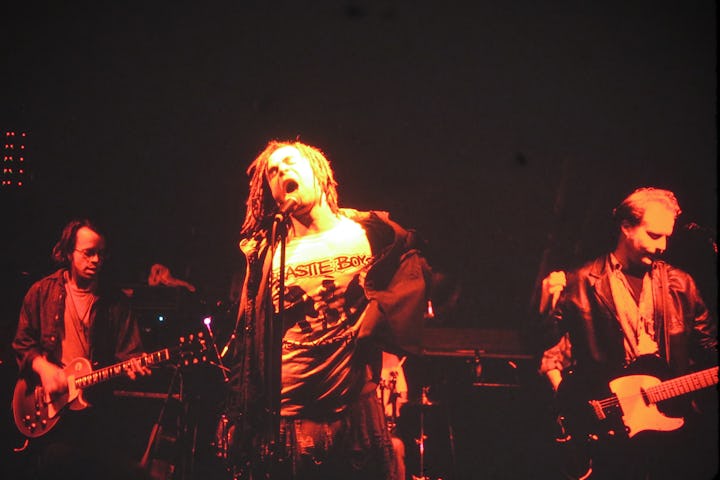30 Years Later, One Overplayed Album Is Now A Legit Classic
Not everything about 1993 was grunge.

If you were in middle school or high school in the 1990s, there’s a good chance you had conflicting feelings about Counting Crows. Calling them a cool band in the way that Nirvana or Pearl Jam were cool never felt right. But like so many things about ‘90s pop culture, the prevalence and persistence of a thing prevented you from questioning whether or not you should or shouldn’t consume certain kinds of music. With most huge albums, you simply didn’t have a choice, those albums consumed you whether you liked it or not.
August and Everything After from the Counting Crows is like that; an album that you heard constantly in the early ‘90s, so much so that probably didn’t question whether or not you actually liked it or not. But, the truth is, thirty years after this record hit on September 14, 1993, August and Everything After is actually way better than you might remember.
Thanks to poppy ear-worm singles from their later albums like “Accidentally in Love” (2004), and “American Girls” (2002), some younger folks might not be aware that the first Counting Crows album opens with a song about worrying about suicide and hating your job. Yes, it’s possible that “Round Here,” is still the greatest Counting Crows song of them all, and that’s partly because the frontman Adam Duritz actually conceived and wrote it for a previous band called The Himalayans. But just like Shirley Manson needed to leave Angelfish to join Garbage, Adam Duritz was destined to reboot “Round Here” for Counting Crows. While this song was never a hit single because it's the first track on August and Everything After, it’s status as a dorm-room anthem was instant in 1993.
Counting Crows at Wetlands in 1993.
If you got into Counting Crows after the early aughts, returning to August and Everything After was probably a revelation. Are these the same guys who covered “Big Yellow Taxi?” Wait, is this the greatest album for sad teenagers or frustrated twenty-somethings ever? The answer is yes and yes, but the album might hit even better in your 30s or 40s.
Essentially, the greatest thing about listening to August and Everything After in 2023 is that it feels the way a sad, dad rock album should feel: Like one big long song. If you put on August and Everything After, you’ll notice when the mega-hit “Mr. Jones” comes on, but none of the songs are bad at all. “Perfect Blue Buildings,” and “Anna Begins,” are back-to-back sad ballads that are genuinely better than most alternative rock songs insofar as you didn’t have to be wearing flannel while loving these tracks. (Thought it doesn’t hurt.) But, the essential greatness of these songs is that they do seem to run together, and sort of seep into you. August and Everything After is an album you may not intend to play all the way through, but before you know it, it’s completely over.
Famously, the title of the album comes from a song that the band decided not to put on the record. And, when the band did eventually release the title song in 2019, it pretty much sounded like just another song from this album. But the album August and Everything After is still much better than the wayward, deleted title song. Because each of the songs of this album sounds like pieces of an angsty puzzle, it’s tempting to say that Counting Crows never topped these songs. Had an alternate universe existed where “August and Everything After” had actually been on August and Everything After, the strange perfect balance of this album would have been broken.
At the risk of offending hardcore Counting Crows fans, the genius of August and Everything After is the fact that it seems like it was created as an actual album, rather than some good songs paired with some okay songs. Omitting the title track (and then not even releasing it for almost thirty years) sort of proves the artistic integrity at work here. That deleted song is totally inoffensive, but somehow, the band knew it didn’t belong with these songs. This kind of well-calibrated rock cocktail is absent on subsequent Counting Crows albums. Yes “Hanging Around,” from This Desert Life is a banger, but let’s not pretend the other songs on the album are nearly as good as anything on August and Everything After. No other Counting Crows has the very specific sad rock sound of “Raining in Baltimore.” There wasn’t a Counting Crows song on the High Fidelity soundtrack in 2000, but “Raining in Baltimore” would have been perfect, had that movie been set in that city instead of Chicago. Why does “Raining in Baltimore” make me think of John Cusak crying in the rain? I don’t know, but the closest answer I can find is that in 1993, Counting Crows were kinda of like the John Cusak of alt-rock; relatable because they were goofy and sad at the same time.
As an artificial in the history of the ‘90s music, August and Everything After creates a funky, soulful counterpoint to the hazy generalization that everything back then was just grunge or hip-hop. But, even if you’re not trying to educate kids about the real sonic feeling of the ‘90s, August and Everything After endures because it's one-of-a-kind. Nobody ever made albums like this, and after 1993, neither did the Counting Crows.
This article was originally published on